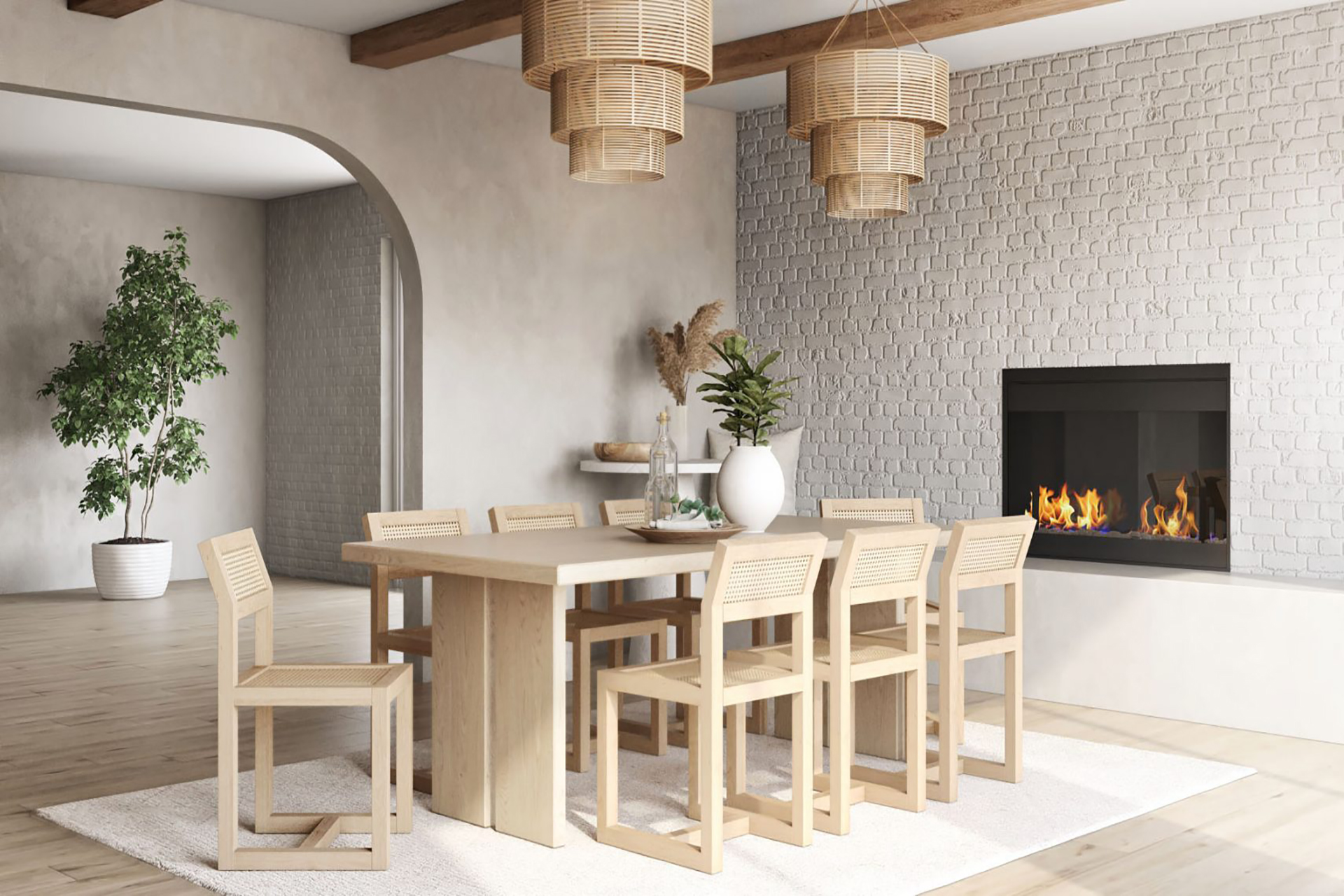The need to create calm and quiet spots at our homes has boost décor trends that allow us to enjoy what the essentials.
One of them is warm minimalism, and evolution of the 90’s rational minimalism that goes beyond typical sobriety of the style to provide more warmth and comfort. The aim is to create functional and tranquil environments that generate positive emotions, and in which the focus is not the objects, but the people and their relationship with the space.
Warm minimalism plays with textures, materials and environments to create simple spaces, but with characteristics that reinforce their visual impact and fill the space.
Appeal to touch and sight
When the decorative objects are few, textures become a way of transmitting emotions at first sight. Woods like walnut, treated to underline their open pore, enrich their texture and provide it with an elegant and deep movement.
Warm minimalism is influenced by eastern philosophies such as wabi-sabi or japandi, although it adds more complex textures and warmer colors to create more comfortable areas. Using materials with unique marks, we obtain ambiences where we can reflect our personality.
Boost natural materials and colors
In these simple spaces, we seek to transmit emotions as soon as we see them. That is why non treated materials are a good option, with simple and solid structures, in which rounded forms stand out.
Also, to classic white, grey and black minimalists we add some natural colors, as well as the whole earth range. Combined with this hues, balanced woods with tranquil structures are a good option to create kind and relaxed environments.
Using the surroundings as another element
Looking for wellbeing, outside elements step inside to be part of the interior. Natural light, and its shadows, become another decoration element that create different ambiences depending on the time of the day.
The use of natural resources also includes other elements from the exterior, such as plants, that play an important role in decoration. In minimalist environments, they add a touch of color and movement through their winding forms, blurring the barriers between the indoors and outdoors and they help us to reinforce our connection with nature.




